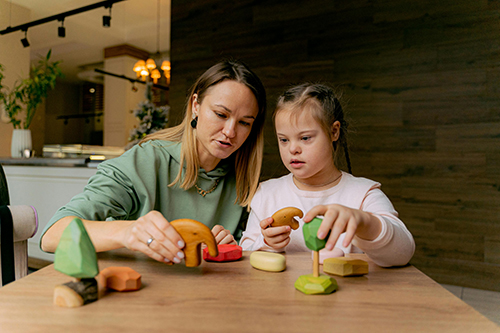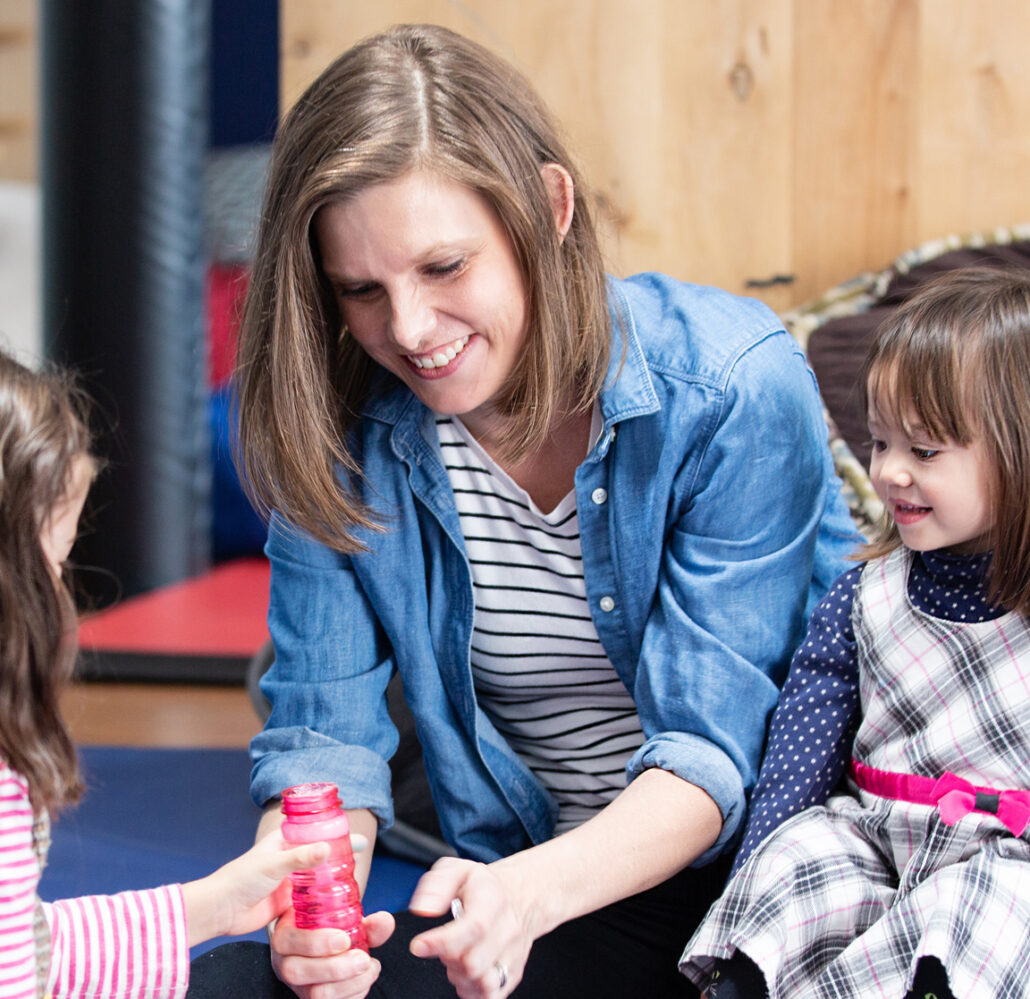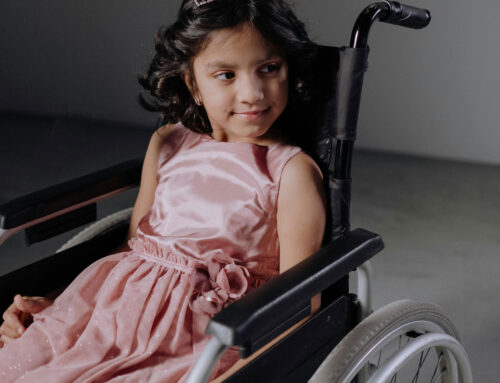Everyone gets their unique features like eye color, hair type, and even height from their parents. That is because we all have twenty-three pairs of chromosomes in our cells, carrying our genes. We inherit one chromosome from each pair from our mother and the other one from our father.
Imagine that your body is a huge library. Inside this library, there are forty-six books, which we call chromosomes. These books contain all the instructions or ‘recipes’ on how to make a human body. Normally, each person gets twenty-three of these books from their mother and twenty-three from their father, so everyone usually has two copies of each book.
Down Syndrome happens when there is an extra copy, or a part of an extra copy, of one of these books, specifically Book Twenty-one. So instead of two copies, there are three. All the extra information in this third book is still being read and followed by the body, which causes the features we see in Down syndrome.
It is one of the most common chromosomal disorders and occurs in about 1 in every 700 to 1,000 births. Down Syndrome is typically not inherited and occurs randomly due to a genetic error during the formation of reproductive cells (sperm or egg) or in early fetal development.
Features can be different for each person, just like every library is a little different. Some common features might include certain facial characteristics, learning challenges, and sometimes health issues. But just like every library has unique and valuable books, every person with Down Syndrome has unique talents and strengths.

Intellectual and Developmental Challenges
Individuals with Down Syndrome may have learning difficulties, slower language development, and delays in motor skills such as sitting, crawling, and walking. Learn more about gross motor milestones in infants with Down Syndrome here: https://eyaslanding.com/gross-motor-milestones-in-babies-with-down-syndrome-trisomy-21/
They will be more prone to certain health conditions, including heart defects, respiratory issues, hearing and vision problems, gastrointestinal disorders, and thyroid dysfunction. Regular medical check-ups and screenings are important to monitor and manage these potential health concerns.
Social and Emotional Developmental Challenges
Think of it like learning how to play a musical instrument. Most of us are not born knowing how to play the piano, but with practice and guidance, we can learn and get better over time. For a child with Down syndrome, learning to interact socially and communicate effectively might be a bit like learning to play a piece of music that is particularly complex. It might take them longer to learn, and they may need to take smaller steps than others.
Their “music teachers,” or the people who help them learn and grow, can include family members, therapists, teachers, and friends. These supportive figures can help them understand the “notes and rhythms” of social interaction. This might involve learning to recognize emotions in themselves and others, understanding social norms, or building skills in conversation.
A Life-Long Condition
While there is no cure for Down Syndrome, there are various treatments and interventions available to support individuals with the condition to reach their full potential and improve their quality of life. The range of intellectual abilities can vary, and many individuals with Down Syndrome can learn and achieve significant milestones.
Treatment
Treatment for Down Syndrome involves a multidisciplinary approach, addressing various aspects of development and health. Here are some key components of treatment:
Starting intervention early is crucial to promoting optimal development. Early intervention programs can involve speech therapy, physical therapy, occupational therapy, and other educational interventions tailored to the individual’s needs. These therapies aim to improve motor skills, communication abilities, and cognitive development.
Access to appropriate educational opportunities is vital for children and individuals with Down Syndrome. Laws ensure that children with disabilities, including Down Syndrome, have the right to receive a free and appropriate public education in the least restrictive environment. Special education programs and individualized education plans (IEPs) can help address specific learning needs.
Many individuals with Down syndrome experience delays in speech and language development. Speech therapy can assist in improving communication skills, articulation, and language comprehension.

Occupational therapy focuses on developing fine motor skills, self-help skills, and promoting independence in daily activities.
Physical therapy aims to enhance gross motor skills, strength, and coordination.
Medical Care
Regular medical check-ups are essential to monitor overall health and address any medical issues associated with Down syndrome, such as heart conditions, thyroid problems, and hearing or vision impairments.
Social and Emotional Support
Providing a supportive and inclusive environment is crucial for the well-being of individuals with Down syndrome. Social skills training and support groups can be beneficial in helping them develop social skills and form meaningful relationships.
Proper nutrition is essential to maintain overall health, manage weight, and prevent other health-related issues that might be more common in individuals with Down syndrome.
Behavioral Interventions
Some individuals with Down syndrome may benefit from behavioral interventions to address specific behavioral challenges and support emotional regulation.
Independent Living Skills
As individuals with Down syndrome grow older, teaching independent living skills becomes more important to foster self-sufficiency and promote their integration into society.
If you or someone you know has Down Syndrome, it is recommended to consult with healthcare professionals, support organizations, and educators who specialize in this condition. They can provide guidance and resources to support the family and the individual’s development and well-being.
At Eyas Landing, Blue Bird Day, and Merlin Day Academy, our treatment approach is personalized to everyone’s unique strengths and challenges, using a collaborative effort involving parents, caregivers, educators, and healthcare professionals. We specialize in this condition and have had immense success in providing therapeutic treatment plans to meet individual needs. Contact us to learn more about what services are right for your child.

Learn More About My Programs
Blue Bird Day is a rotational therapy program structured like a preschool or kindergarten, but instead of teachers all our staff are therapists! This program is designed to foster socialization, sensory regulation, and learning for children ages 2-7 and helps provide children the tools they need to succeed in a traditional classroom.
Eyas Landing is an outpatient therapy clinic that provides services for children ages 0-21. Our multidisciplinary team of therapists provide ABA, developmental, occupational, physical, speech, nutrition and feeding therapy along with early intervention, social work, counseling, and neuropsychological testing at our West Loop clinic, in-home, at school, and virtually.
Merlin Day Academy is a therapeutic day school for children ages 6-14. Our proprietary model utilizes daily therapeutic and educational rotations to support children’s growth, learning, and their transition into the least restrictive environment possible.




